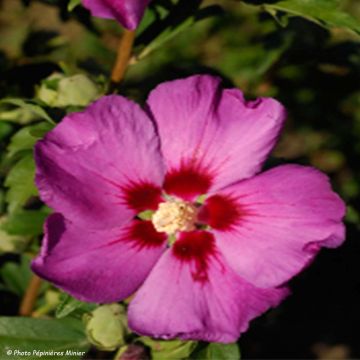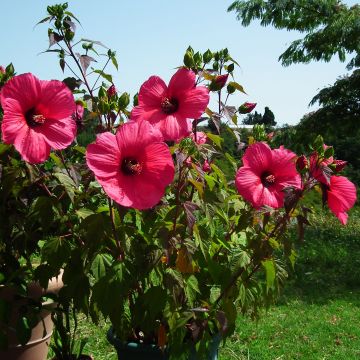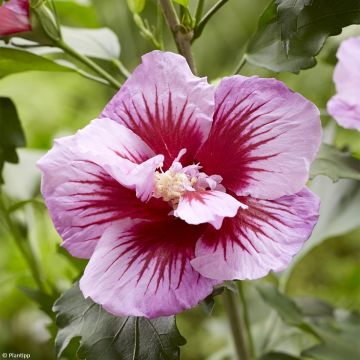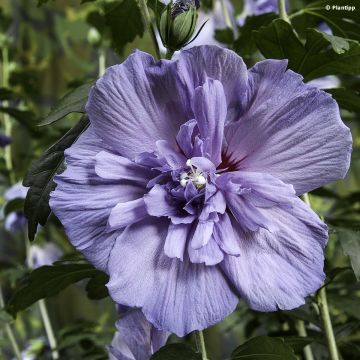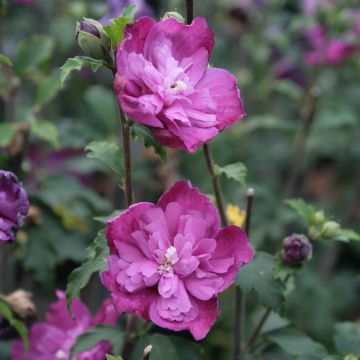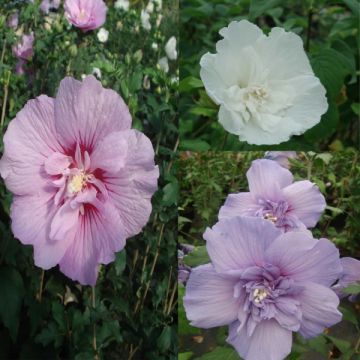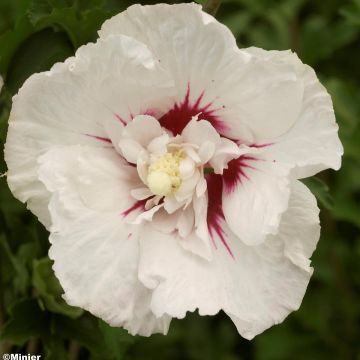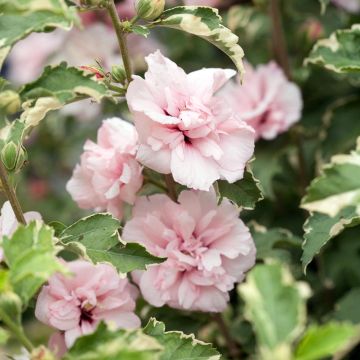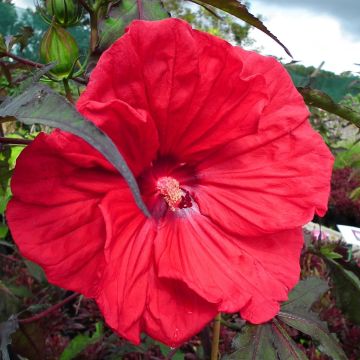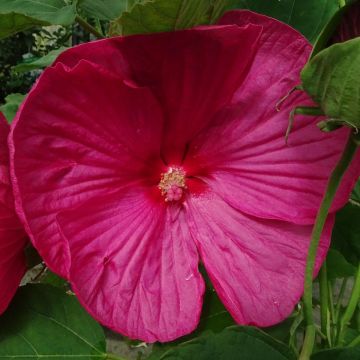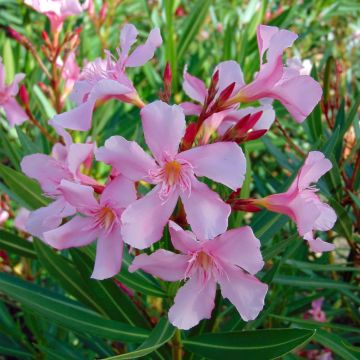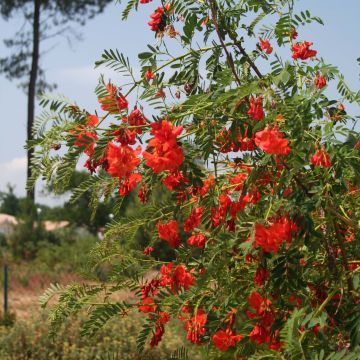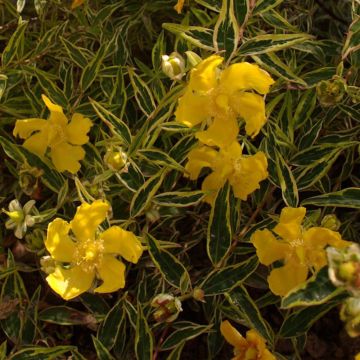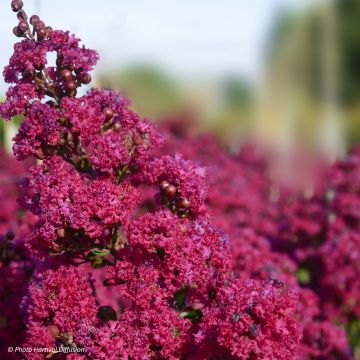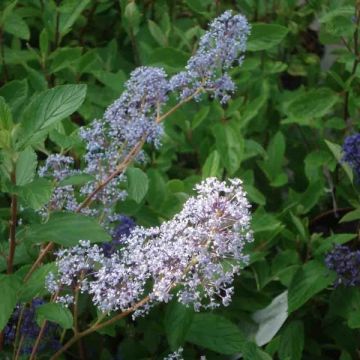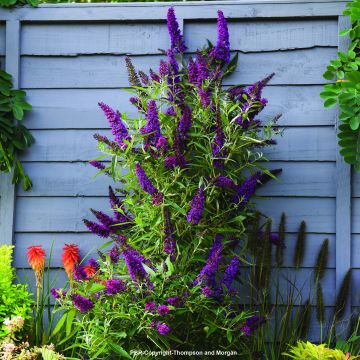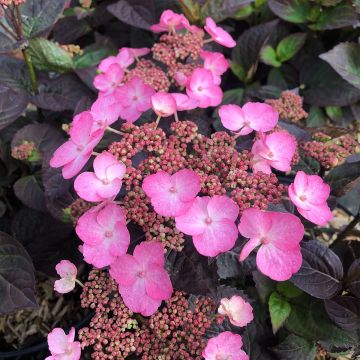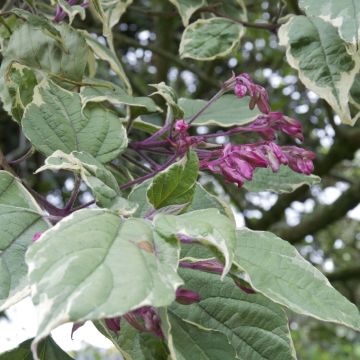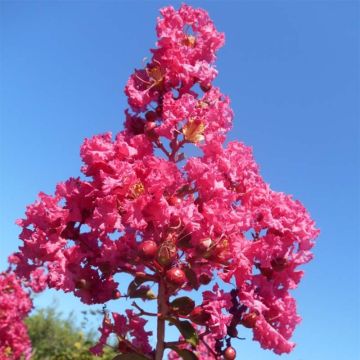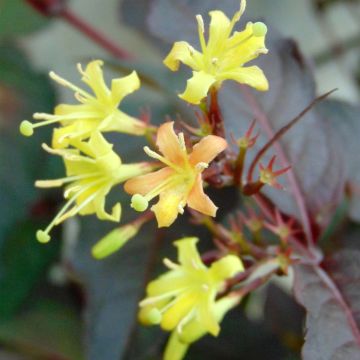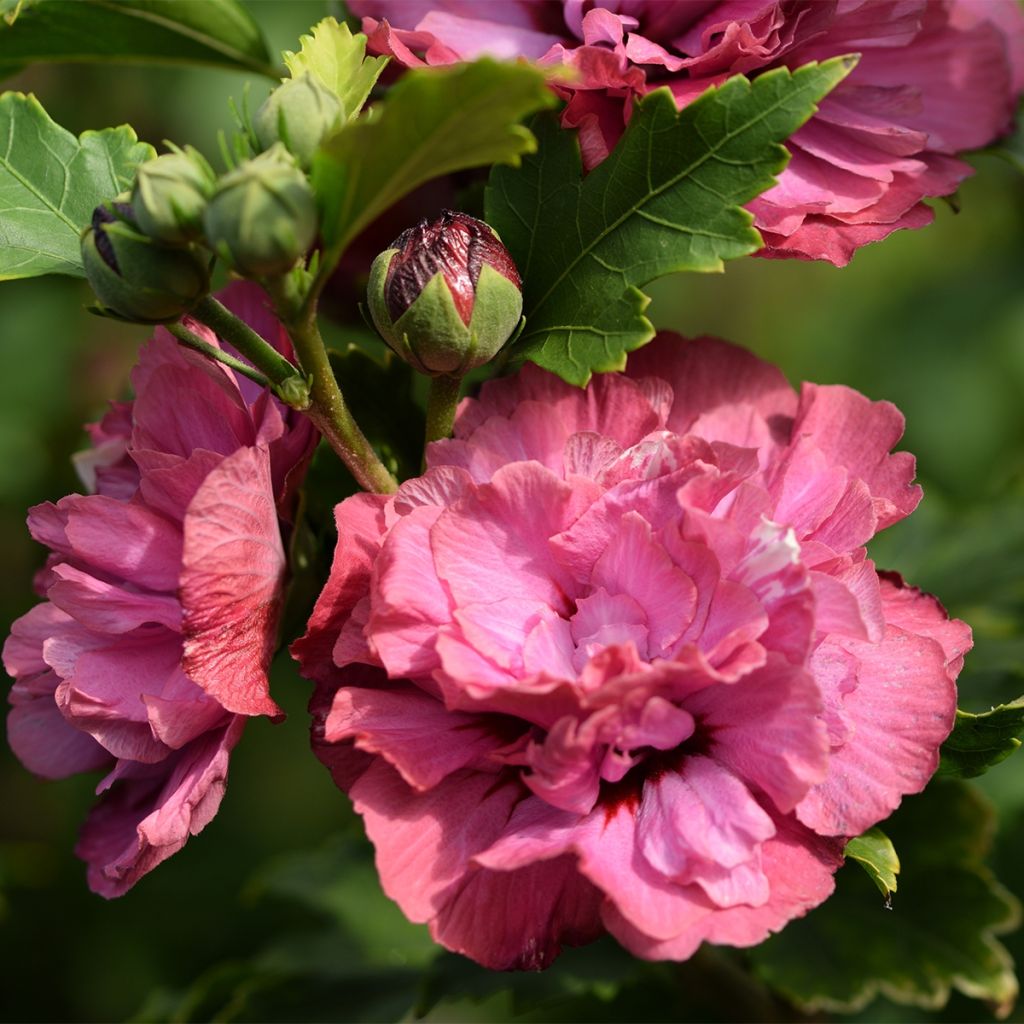

Hibiscus syriacus Duc de Brabant - Althéa double rouge
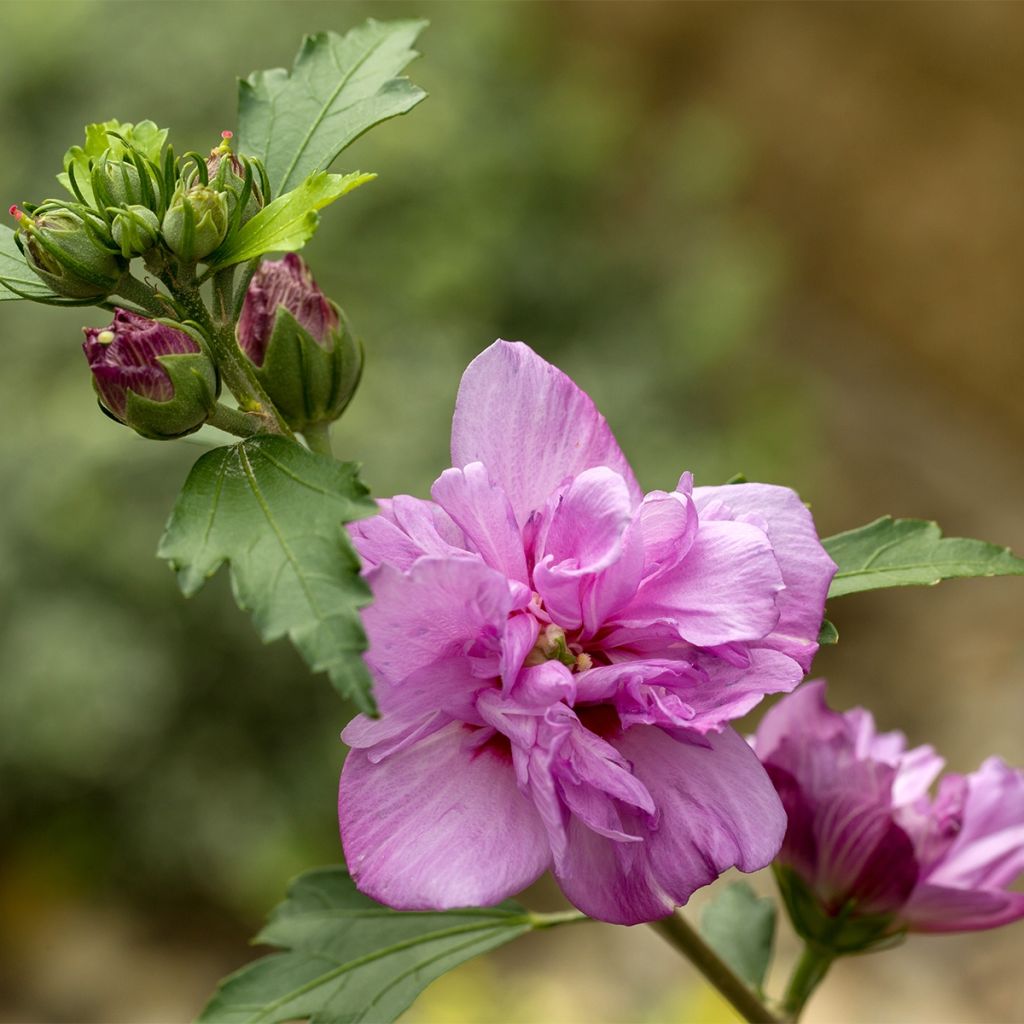

Hibiscus syriacus Duc de Brabant - Althéa double rouge
Hibiscus syriacus Duc de Brabant - Rose of Sharon
Hibiscus syriacus Duc de Brabant
Common Hibiscus, Rose of Sharon, Syrian ketmia, St Joseph's rod, Garden Hibiscus
The colour is different, more purple than red. Otherwise, delivery was very good and good recovery.
doumee, 21/09/2024
This item cannot be shipped to the selected country
Delivery charge from €5.90
Delivery to Corse prohibited
More information
Schedule delivery date,
and select date in basket
This plant carries a 24 months recovery warranty
More information
We guarantee the quality of our plants for a full growing cycle, and will replace at our expense any plant that fails to recover under normal climatic and planting conditions.
From €5.90 for pickup delivery and €6.90 for home delivery
Express home delivery from €8.90.
Delivery to Corse prohibited: UE law prohibits the import of this plant from mainland France to Corse as part of the fight against Xylella fastidiosa. Please accept our sincere apologies.
More information

Does this plant fit my garden?
Set up your Plantfit profile →
Description
The Hibiscus syriacus 'Duc de Brabant' is a beautiful variety of bush mallow that produces abundant blooms in shades of pink-red and blue-pink from July to September. This moderately growing shrub has a well-branched habit and can thrive in a small garden, a large flower bed, or a container near the house. The plant can easily grow in the sun and can tolerate ordinary soil, limestone, and occasional dry conditions in all climates. You can plant it as a standalone feature in the centre of a bed, in a flowering hedge, or any suitable location of your choice.
The Hibiscus syriacus Duc de Brabant is a horticultural selection derived from a bush that is sometimes called Garden Hibiscus, a very hardy plant, deciduous in our climates but with evergreen foliage in warm temperatures during winter. It belongs to the Malvaceae family, just like hollyhocks and marshmallows. Althaea is native to temperate regions of Asia and has given rise to many cultivars, including this variety, Duc de Brabant, with double flowers adorned with a heart of small crumpled petals.
The Althea Duc de Brabant has a bushy appearance, and within a few years, it forms an average-sized bush that can reach up to 2m (6 ft 7 in) in height, with a spread of approximately 1.25m. An erect but well-branched growth supports its upright habit. Each flower lasts only one day, but the plant blooms from July to September. The flowers are large corollas, measuring 9 to 11cm (3.5 to 4.3 in) in width, and they open against a finely cut, dark green, slightly glossy foliage. The leaves are alternate, lobed, ovate to lanceolate, and have toothed and wavy margins. The flower colour is a deep fuchsia-pink-red with blue undertones, veined with purple on the periphery, randomly variegated with lighter blue-pink at the heart, and featuring a central spot of very dark red. The plant is leafless in winter, and its new leaves appear late in spring.
The Althaea 'Duc de Brabant' likes bright, warm exposure and can tolerate light shade in southern regions. This Hibiscus requires no maintenance and takes its time to establish. Plant it in a sheltered spot away from strong winds, in soil that remains slightly moist until late summer. This charming shrub can be used as a medium-sized hedge in combination with other hibiscus varieties in different colours, with buddleias, abelias, lilacs, and other mock oranges. It will also look good as a standalone plant or at the back of a bed of perennials composed of asters, phlox, daylilies, gauras, or shrubby mallows. Its moderate size allows it to be grown in a large container, in a nutritious substrate, and by watering regularly to fully enjoy its flowering on the terrace or balcony.
Report an error about the product description
Hibiscus syriacus Duc de Brabant - Rose of Sharon in pictures
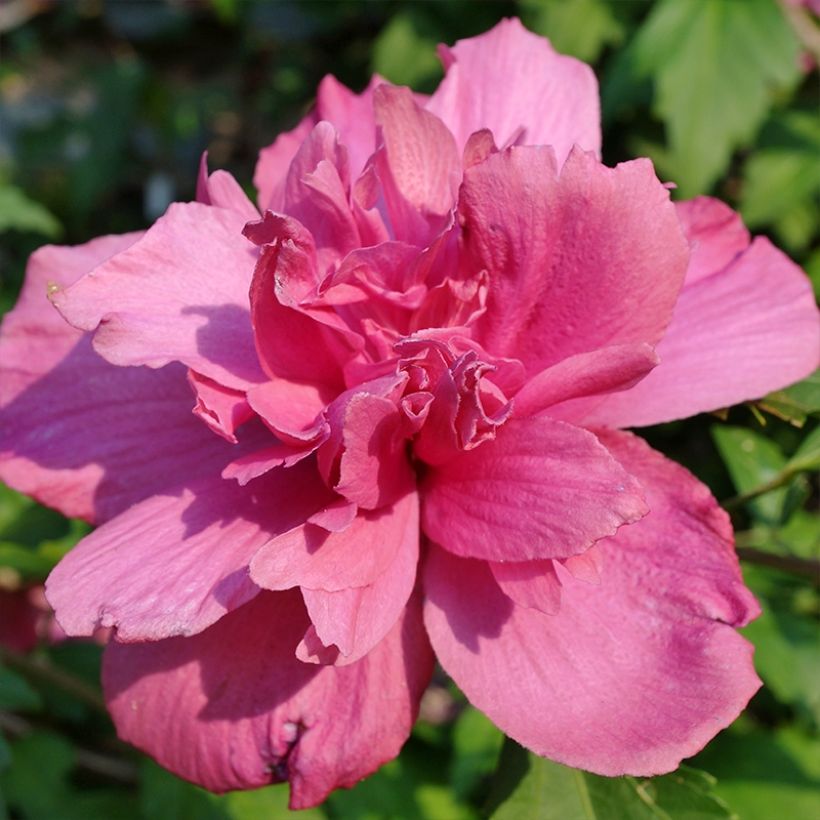

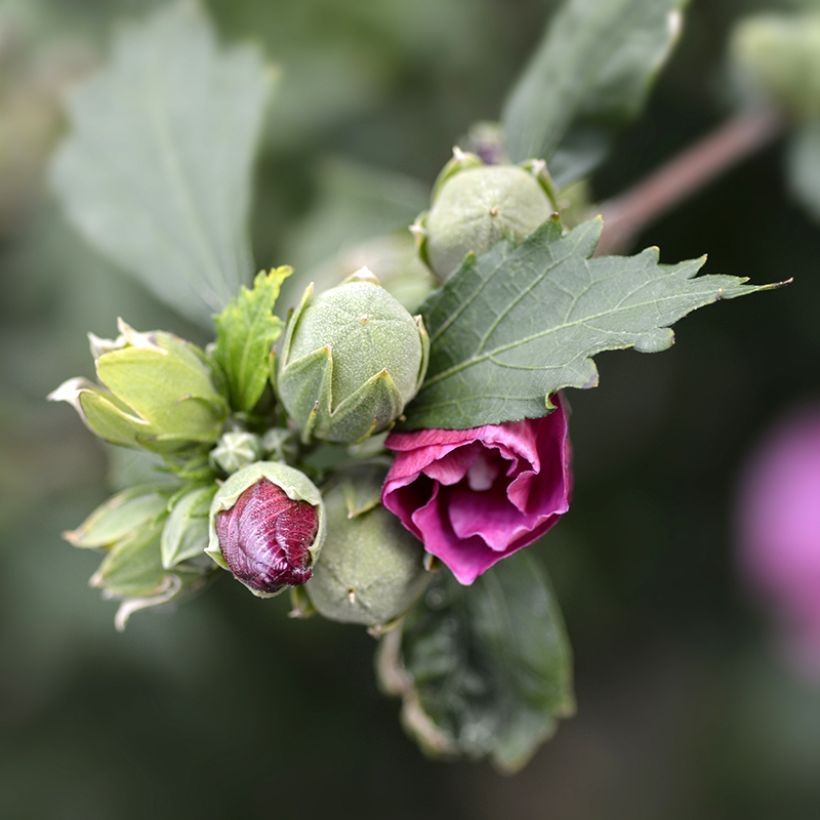

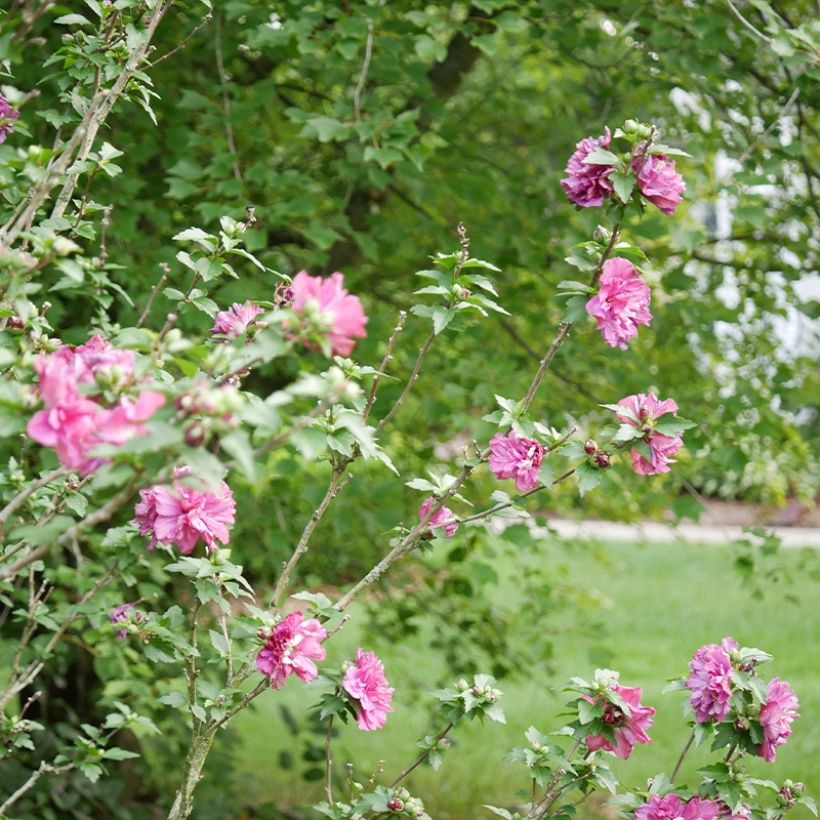

Plant habit
Flowering
Foliage
Botanical data
Hibiscus
syriacus
Duc de Brabant
Malvaceae
Common Hibiscus, Rose of Sharon, Syrian ketmia, St Joseph's rod, Garden Hibiscus
Cultivar or hybrid
Other Hibiscus
Planting and care
To plant the Hibiscus syriacus 'Duc de Brabant' choose either spring or autumn and find a location with plenty of sunlight. If you live in a warmer area, partial shade can be used. The soil should be well-drained, deep, loose, and fertile. If the soil needs improvement, add garden soil, compost, and sand to the planting hole. After planting, water generously. Do not be concerned if the vegetation does not form before May, as this is typical for this plant. At maturity, it can withstand temperatures as low as -20°C (-4 °F) and grow in almost all regions except mountainous areas or very cold winter regions. If you want your shrubby hibiscus to thrive, ensure it can handle heat and occasional dry soil. However, the bushes are more vibrant and floriferous when grown in soil that retains moisture during the summer. If necessary, mulch the base of the plant and water it.
Planting period
Intended location
Care
-
, onOrder confirmed
Reply from on Promesse de fleurs
Summer-flowering shrubs
Haven't found what you were looking for?
Hardiness is the lowest winter temperature a plant can endure without suffering serious damage or even dying. However, hardiness is affected by location (a sheltered area, such as a patio), protection (winter cover) and soil type (hardiness is improved by well-drained soil).

Photo Sharing Terms & Conditions
In order to encourage gardeners to interact and share their experiences, Promesse de fleurs offers various media enabling content to be uploaded onto its Site - in particular via the ‘Photo sharing’ module.
The User agrees to refrain from:
- Posting any content that is illegal, prejudicial, insulting, racist, inciteful to hatred, revisionist, contrary to public decency, that infringes on privacy or on the privacy rights of third parties, in particular the publicity rights of persons and goods, intellectual property rights, or the right to privacy.
- Submitting content on behalf of a third party;
- Impersonate the identity of a third party and/or publish any personal information about a third party;
In general, the User undertakes to refrain from any unethical behaviour.
All Content (in particular text, comments, files, images, photos, videos, creative works, etc.), which may be subject to property or intellectual property rights, image or other private rights, shall remain the property of the User, subject to the limited rights granted by the terms of the licence granted by Promesse de fleurs as stated below. Users are at liberty to publish or not to publish such Content on the Site, notably via the ‘Photo Sharing’ facility, and accept that this Content shall be made public and freely accessible, notably on the Internet.
Users further acknowledge, undertake to have ,and guarantee that they hold all necessary rights and permissions to publish such material on the Site, in particular with regard to the legislation in force pertaining to any privacy, property, intellectual property, image, or contractual rights, or rights of any other nature. By publishing such Content on the Site, Users acknowledge accepting full liability as publishers of the Content within the meaning of the law, and grant Promesse de fleurs, free of charge, an inclusive, worldwide licence for the said Content for the entire duration of its publication, including all reproduction, representation, up/downloading, displaying, performing, transmission, and storage rights.
Users also grant permission for their name to be linked to the Content and accept that this link may not always be made available.
By engaging in posting material, Users consent to their Content becoming automatically accessible on the Internet, in particular on other sites and/or blogs and/or web pages of the Promesse de fleurs site, including in particular social pages and the Promesse de fleurs catalogue.
Users may secure the removal of entrusted content free of charge by issuing a simple request via our contact form.
The flowering period indicated on our website applies to countries and regions located in USDA zone 8 (France, the United Kingdom, Ireland, the Netherlands, etc.)
It will vary according to where you live:
- In zones 9 to 10 (Italy, Spain, Greece, etc.), flowering will occur about 2 to 4 weeks earlier.
- In zones 6 to 7 (Germany, Poland, Slovenia, and lower mountainous regions), flowering will be delayed by 2 to 3 weeks.
- In zone 5 (Central Europe, Scandinavia), blooming will be delayed by 3 to 5 weeks.
In temperate climates, pruning of spring-flowering shrubs (forsythia, spireas, etc.) should be done just after flowering.
Pruning of summer-flowering shrubs (Indian Lilac, Perovskia, etc.) can be done in winter or spring.
In cold regions as well as with frost-sensitive plants, avoid pruning too early when severe frosts may still occur.
The planting period indicated on our website applies to countries and regions located in USDA zone 8 (France, United Kingdom, Ireland, Netherlands).
It will vary according to where you live:
- In Mediterranean zones (Marseille, Madrid, Milan, etc.), autumn and winter are the best planting periods.
- In continental zones (Strasbourg, Munich, Vienna, etc.), delay planting by 2 to 3 weeks in spring and bring it forward by 2 to 4 weeks in autumn.
- In mountainous regions (the Alps, Pyrenees, Carpathians, etc.), it is best to plant in late spring (May-June) or late summer (August-September).
The harvesting period indicated on our website applies to countries and regions in USDA zone 8 (France, England, Ireland, the Netherlands).
In colder areas (Scandinavia, Poland, Austria...) fruit and vegetable harvests are likely to be delayed by 3-4 weeks.
In warmer areas (Italy, Spain, Greece, etc.), harvesting will probably take place earlier, depending on weather conditions.
The sowing periods indicated on our website apply to countries and regions within USDA Zone 8 (France, UK, Ireland, Netherlands).
In colder areas (Scandinavia, Poland, Austria...), delay any outdoor sowing by 3-4 weeks, or sow under glass.
In warmer climes (Italy, Spain, Greece, etc.), bring outdoor sowing forward by a few weeks.

































